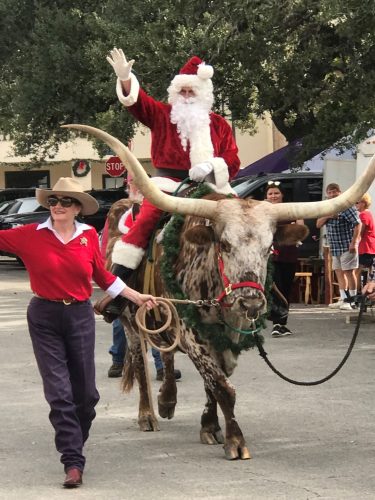As a July 4th tradition, I’ve posted an excerpt from Stephen Vincent Benet’s poem Listen to the People. The title I originally used for these posts was It Shall Be Sustained, which is from the last line of Benet’s poem.
Narrator:
This is Independence Day,
Fourth of July, the day we mean to keep,
Whatever happens and whatever falls
Out of a sky grown strange;
This is firecracker day for sunburnt kids,
The day of the parade,
Slambanging down the street.
Listen to the parade!
There’s J. K. Burney’s float,
Red-white-and-blue crepe-paper on the wheels,
The Fire Department and the local Grange,
There are the pretty girls with their hair curled
Who represent the Thirteen Colonies,
The Spirit of East Greenwich, Betsy Ross,
Democracy, or just some pretty girls.
There are the veterans and the Legion Post
(Their feet are going to hurt when they get home),
The band, the flag, the band, the usual crowd,
Good-humored, watching, hot,
Silent a second as the flag goes by,
Kidding the local cop and eating popsicles,
Jack Brown and Rosie Shapiro and Dan Shay,
Paul Bunchick and the Greek who runs the Greek’s,
The black-eyed children out of Sicily,
The girls who giggle and the boys who push,
All of them there and all of them a nation.
And, afterwards,
There’ll be ice-cream and fireworks and a speech
By somebody the Honorable Who,
The lovers will pair off in the kind dark
And Tessie Jones, our honor-graduate,
Will read the declaration.
That’s how it is. It’s always been that way.
That’s our Fourth of July, through war and peace,
That’s our fourth of July.
And a lean farmer on a stony farm
Came home from mowing, buttoned up his shirt
And walked ten miles to town.
Musket in hand.
He didn’t know the sky was falling down
And, it may be, he didn’t know so much.
But people oughtn’t to be pushed around
By kings or any such.
A workman in the city dropped his tools.
An ordinary, small-town kind of man
Found himself standing in the April sun,
One of a ragged line
Against the skilled professionals of war,
The matchless infantry who could not fail,
Not for the profit, not to conquer worlds,
Not for the pomp or the heroic tale
But first, and principally, since he was sore.
They could do things in quite a lot of places.
They shouldn’t do them here, in Lexington.
He looked around and saw his neighbors’ faces
The poem is very long, and is worth reading in full. The full text was published in Life Magazine; it is online here. The Life text may be a little difficult to read; I posted an excerpt which is considerably longer than the above here.
Benet’s poem ends with these words:
We made it and we make it and it’s ours
We shall maintain it. It shall be sustained
But shall it?

